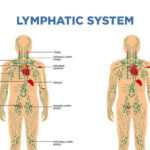The Right and Wrong Foods for Back Pain
Whether mild or chronic, back pain affects approximately 65 million people in the United States. This condition can range from muscle aches and can even be felt lower in the legs and joints such as knees. The pain can be dull, constant, or sudden and sharp. It can be caused by heavy lifting or develop over time due to age-related degenerative changes in the spine.
However, other instances when back pain can occur are with the presence of inflammatory disorders. With such a common medical condition and its wide-ranging causes and effects, it must be noted that although there are medical treatments, you can also engage in home remedies to relieve back pain.
In particular, you can focus on the right foods for back pain to help relieve and alleviate symptoms. But what are these foods and drinks and what should be avoided? We answer these questions in more detail below.
What are some of the main causes of back pain?
There are several medical and non-medical conditions that can exacerbate back pain. On the medical side, we have the potential causes of back pain due to muscle or ligament strain, bulging, herniated, or ruptured discs, arthritis, osteoporosis, degenerative disc disease, spondylolisthesis or ankylosing spondylitis, spinal stenosis, fractured vertebrae, scoliosis, fibromyalgia, kidney stones or infections, endometriosis, tumors, pregnancy, and others.
Meanwhile, on the non-medical front, there are also some dietary causes of back pain, which can contribute to pain and inflammation and these include consuming excessive amounts of caffeine and alcohol, sugar, and foods that increase cortisol levels.
As for lifestyle habits that induce stress, these may include skipping meals, eating large portions of food, or limiting oneself to a restrictive diet for prolonged periods of time.
Preventing back pain
Preventing back pain or addressing the symptoms will vary from person to person and will also depend on the type of medical condition that you may have been diagnosed with. However, there are certain steps you can take to alleviate symptoms and improve your physical condition. These steps for a stronger spine and back include:
- Low-impact exercise
- Building muscle strength and flexibility
- Quitting smoking
- Maintaining a healthy weight
In terms of the last step, maintaining a healthy weight, it’s worth knowing which foods for back pain you should specifically be consuming in order to help reduce symptoms and pain. Below, we cover some of the best foods, fruit, and drinks to consume as well as the worst foods for back pain. Let’s dive in.
Which food is best for back pain?
Preventing back pain in your youth or even in your older years can be achieved with the right diet. This diet should be anti-inflammatory and one that is rich in proteins. However, not every type of food will do, and here is where we outline the most crucial foods you should be consuming.
Meat and fish
- Sardines
- Tuna
- Mackerel
- Herring
- Black cod
- Tuna
- Trout
- Anchovies
- Shellfish
- Salmon (which contains omega-3 [DHA and EPA] and omega-6 fatty acids) which are not produced naturally in the body. They can only be acquired from our diet.
- Lean meats: chicken and turkey
Vegetables
- Spinach and broccoli (for strong bones) should be consumed for inflammation and back pain. In addition, edamame (green soybeans) can help prevent bone loss and improve the fiber, protein, and vitamin content consumed.
- Cauliflower and cabbage are rich in vitamins A, C, and K, which are antioxidants. They also have a compound called sulforaphane, which blocks an enzyme that causes joint pain and inflammation.
- Carrots, beets, sweet potatoes, and pumpkins are root vegetables rich in beta-carotene, which is a powerful antioxidant.
- Pulses: pulses such as lentils, beans, and chickpeas are a rich source of protein, minerals, flavonoids, and fibers. They help provide strength to the body and their anti-inflammatory and regenerative properties also reduce knee and back pain to a large extent and heal the tissues faster.
Herbs
- Ginger: also known as Zingiber officinale, this is a root or herb that contains active ingredients which can inhibit the production of leukotrienes and prostaglandins – these are substances that can lead to inflammation and cause painful swelling. It can also be taken for back pain as a result of joint stiffness and arthritis. In addition, ginger is also an antioxidant, antinausea, and anticancer agent. It also helps improve brain function and decreases chronic inflammation that accelerates age-related degeneration. It can be eaten raw or in smoothies or teas.
- Turmeric: turmeric contains curcumin and other natural chemicals, which decrease inflammation and pain associated with it. It is considered more powerful than ginger at helping to relieve back pain, pain associated with degenerative disc disease, sciatica, etc. It can be added to curries, smoothies, or juices.
- Thyme: thyme is said to suppress inflammation by reducing COX-2. The main component that does this is carvacrol.
- Cinnamon, cayenne, basil, oregano, capsicum (chilies), and rosemary: these also contain anti-inflammatory properties.
- Garlic and onions: garlic is said to have similar anti-inflammatory properties as ibuprofen and can help alleviate back pain.
Nuts
Walnuts, peanuts, cashews, almonds, and flaxseed are some high sources of alpha-linolenic acid (ALA), magnesium, and vitamin E, which help with inflammation. These and others can help increase anti-inflammatory proteins and lower inflammation-causing molecules.
Olive oil
Extra virgin olive oil is said to have antioxidants that reduce inflammation and can subsequently reduce back pain. It also contains omega-3 fatty acids, which have a similar anti-inflammatory effect. It must, however, be consumed with great moderation because it contains a lot of calories.
Other foods
Tahini: rich in magnesium, which is a muscle relaxant, tahini is made from sesame seeds and is used to make hummus.
Whole grains: opt for whole grains like wheat, brown rice, millet, quinoa, barley, oats, etc.
Dark chocolate
Minerals and vitamins
The following vitamins should also be consumed due to their anti-inflammatory properties: A, B-complex, C, D, E, and K. Calcium should also be consumed.
Which fruit is best for back pain?
Having covered some of the main foods for back pain, let’s take a look at which fruits can also help with anti-inflammatory properties. In short, the list includes:
- Blueberries
- Strawberries
- Raspberries
- Tart cherries
- Apples
- Pineapple
- Grapes
- Citrus fruits such as lemons and oranges (the skin should be consumed for maximum effect)
Which drink is good for back pain?
Luckily, when it comes to foods for back pain, you have a lot of options. But what about drinks for back pain? Research shows that the following drinks can help ease back pain:
- Water
- Green tea
- Turmeric tea
- Fruit juices (tart cherry, pineapple, and lemon)
- Berry smoothies
- Apple cider vinegar drink
- Coffee (to be consumed in moderation)
- Red wine (to be consumed in moderation)
Which food is not suitable for back pain?
Having covered the right foods for back pain, are there any foods that can be considered detrimental to back pain? The answer is “yes” and these foods include:
- Processed foods
- Fast foods
- Saturated fats
- Fried foods
- Microwavable meals
- Fizzy and sugary drinks
- Snack bars with sugar or high-fructose corn syrup
- Foods with hydrogenated oil and preservatives
- Vegetable oils – sunflower, mixed vegetable oils, and corn
- Vegetable and margarine shortening
- High-fructose corn syrup
- Full-fat dairy products
- Foods with trans-fats
- Low in refined or processed carbohydrates
- Sugar-sweetened beverages
- Excessive alcohol consumption
- Excessive caffeine consumption
- Red meat
- Foods with chemicals, additives, and preservatives
Wrapping up
In wrapping up this article, it’s evident that there are some right and wrong foods for back pain. Remember the old adage that everything should be consumed in moderation. However, if you want to be careful with your back pain and relieve your symptoms, eating the right foods is necessary while eliminating the “wrong” foods. As such, consider combining a healthy diet with a low-impact exercise regimen for maxim results and you should start feeling the improvements in the quality of food you’re consuming as its anti-inflammatory properties start working their magic.
Resources:
http://www.niams.nih.gov/health-topics/back-pain#:~:text=Back%20pain%20can%20happen%20when,to%20a%20muscle%20or%20tendon.
https://www.ncbi.nlm.nih.gov/pmc/articles/PMC6730953/#:~:text=Vitamin%20D%20deficiency%20and%20insufficiency%20can%20cause%20or%20worsen,back%20pain%20and%20muscle%20spasm.
https://www.cbsnews.com/chicago/news/your-back-pain-may-be-linked-to-foods-you-eat/
http://www.healthline.com/health/back-pain-management#change-shoes











